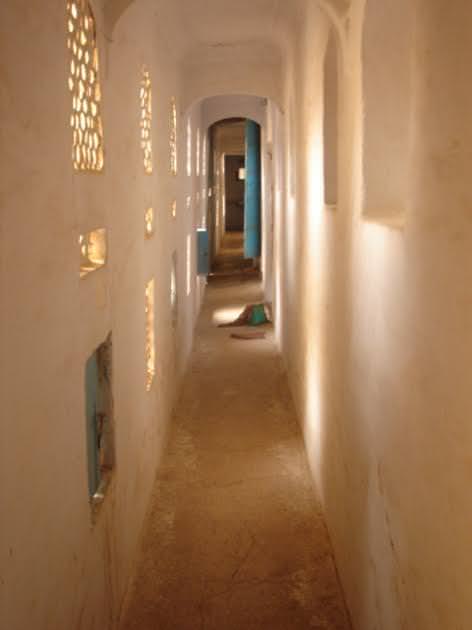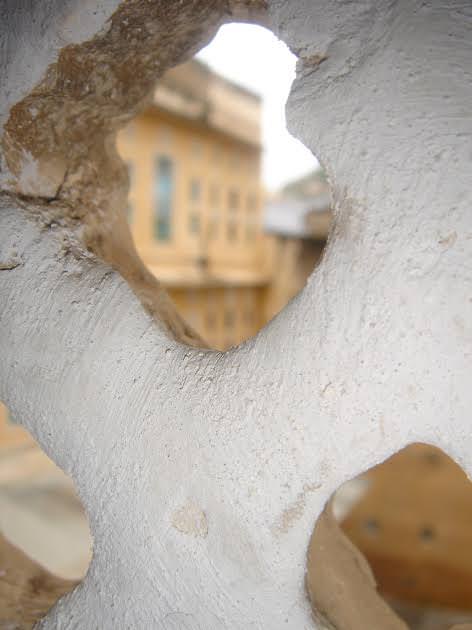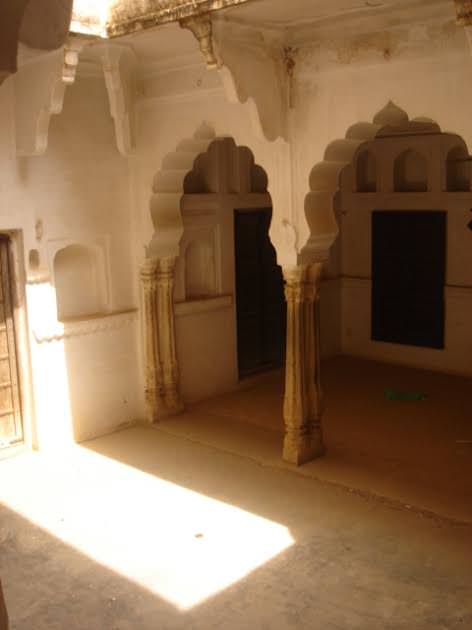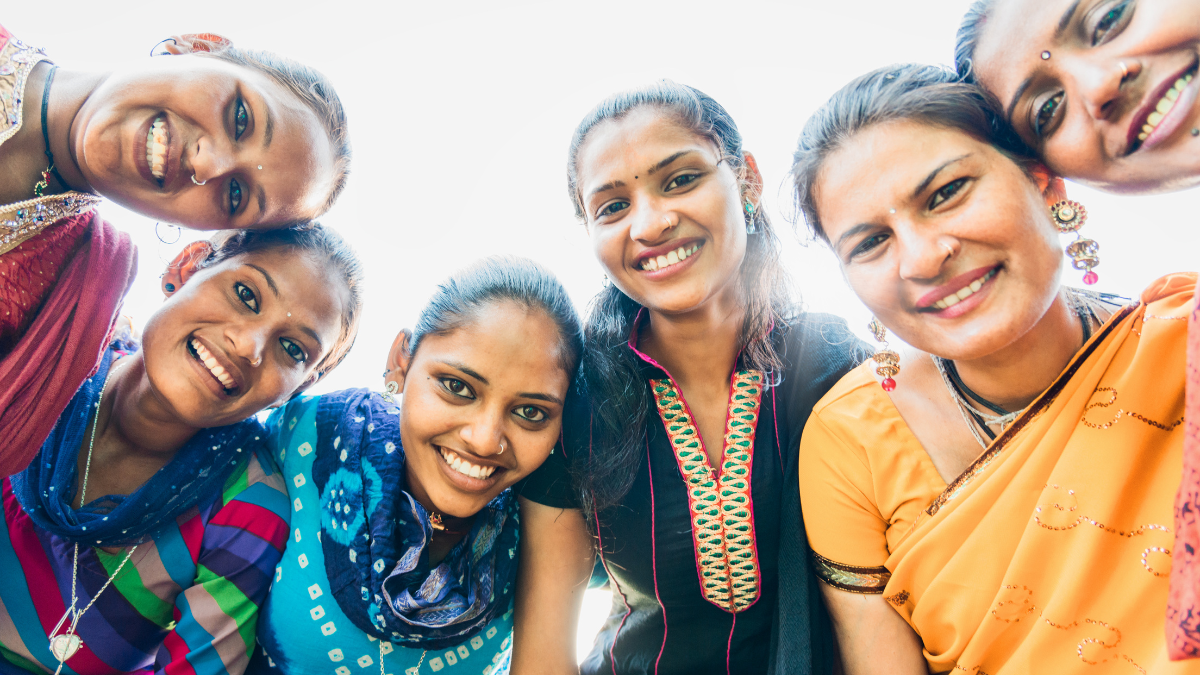The intersection of space and gender has always fascinated me, particularly vis a vis women having accessibility to space – or not. I have over time become especially interested in learning more about how women were historically confined to the private, domestic space in an Indian cultural and sociological context, their entrance into and presence in the public space is a contested matter.
Perhaps, it all began while visiting my family’s ancestral haveli in Ajmer during my childhood. As I roamed through the narrow passages, courtyards, miniature and sprawling rooms and peered out at the world through the beady, shuttered windows, I became increasingly drawn towards wanting to unpack the notion of space within the haveli. Its varied topography made me aware of the multiple modes of living that lay within it, reflecting the diversity of its inhabitants and the prevailing social mores of that time. For instance, when I asked my late paternal grandmother about how she personally negotiated the haveli space, she told me that she would be in purdah in presence of her mother-in-law and that when she and the other ladies of the house had to go out of the haveli and into the streets, they would alight from the haveli through a special passage-way. They remained enshrouded in the purdah, both in terms of being veiled as well as being enclosed inside a mobile purdah called the chandni, which their women domestic help carried through the streets.
My maternal grandmother too described having to go into purdah at the age of thirteen and moving around in the chandni growing up as a young woman in Jodhpur. As I recall both of my grandmothers describing those scenes to me, it strikes me that they were still, nevertheless, visible despite every effort expended towards making them invisible in both the private and public space.

During my first year of university, I discovered the novel, ‘Inside the Haveli‘ by Rama Mehta. Set in Udaipur, Rajasthan, given my haveli obsessions, I was anticipating rich, ornate depictions of the rituals, traditions, customs and costumes of the haveli as well of its physical appearance. The novel is about an educated young girl, Geeta, who marries into an extremely traditional Rajasthani household, where she is expected to abide by stifling notions of gendered, patriarchal expectations and behave according to those rules. Despite the fact that her husband is an academic and a supportive, encouraging partner, she nevertheless has to behave as is appropriate for the haveli‘s daughter-in-law.
The novel revolves around Geeta’s constant efforts to carve out a literal and figurative space for herself in the haveli; she reads books, she teaches many members of the retinue of women help populating the haveli, encourages their daughters to attend school, as opposed to marrying them off at a tender age, and strives to make her daughter, Vijay (interestingly given a boy’s name) an independent personality. Yet, early on in the book, we see her reminiscing about entering the mardana, or the male space; however, she can only linger there for a few minutes before being discovered by an old woman retainer and angrily asked to return to the place where she belongs: the zenana. The scene encapsulates the novel’s overriding theme of Geeta’s struggle to liberate herself from the claustrophobic confines of the zenana to fully participate in the much bigger world beyond – and the forces that inhibit her from doing so.
Geeta’s struggles become the most acute when her family elders plan to arrange a teenage Vijay’s engagement to man several years older to her; she greatly resists, refusing to subject her daughter to those regressive and restrictive laws that she ultimately could not escape from. The book nevertheless concludes on a somber, uncertain note, what with the passing way of Geeta’s father-in-law (a figure who notably did support Geeta in her pursuits); the author hints that Geeta may eventually cave into tradition despite her patent unhappiness and frustration with the decision regarding Vijay’s nuptials.
The story has since then remained with me, reminding me of what my grandmothers had told me; what I also found poignant was the author biography: “A top sociologist, lecturer, and novelist, her writings included The Western Educated Hindu Woman, The Hindu Divorced Woman, and ‘From Purdah to Modernity.’ One of the first women to be appointed to India’s foreign service, Rama Mehta was forced to resign her position upon marriage.’” I sought to research further about Rama Mehta but could not gather much about her; all I could do was conjecture if Mehta was in fact writing a veiled version of her life and thus was ultimately compelled to remain inside the haveli following her marriage?

‘Inside the Haveli‘ dominated my mind to such an extent that it led me to contemplate writing a book about the havelis of today in Rajasthan. A few years ago, I had visited a haveli inhabited by a Rajput family in Jodhpur to potentially research regarding that book. After being shown around the haveli, when I remarked upon how especially beautiful the zenana was in comparison to the more austere, functional atmosphere of the mardana, a young man from the family explained given that the women rarely went out, it was the zenana which was essentially their world – and it should be made as exquisite as possible. Looking around at the gorgeous carved niches and windows, the vibrant frescoes, and the tinkling fountain, I couldn’t help wonder if that garden of sorts ever could be sufficient recompense for the inability to experience the joy and beauty of freely moving within the public space. The traditions in the family still persisted to an extent for when I requested the man if I could interview his mother, he politely told me that as she did not come downstairs and reveal her face in public, I would have to be the one who would go up.
I kept on thinking about the idea of the haveli, its gendered spaces, and the women inhabiting them. I found myself working on a book of short stories, of which several are set in and connected to a haveli. In my short stories, I explore the notion of space and question what was so threatening about the idea of women entering and becoming participants in the public space? And what would happen if a free-spirited woman would enter the haveli, interrogating the rules of space and challenging them by writing a book? Perhaps, I am unconsciously seeking to re-write the lives of all those Geetas who ultimately had to remain inside the haveli, in more ways than one. In my haveli, at least, their words would be the wings that would set them free.
All images courtesy the author from her ancestral haveli.
About the author(s)
Priyanka Sacheti is a writer based in New Delhi, India. Educated at Universities of Warwick and Oxford, United Kingdom, Priyanka previously lived in Sultanate of Oman and United States. She has been published in numerous publications with a special focus on art, gender, diaspora, and identity. She's author of three poetry volumes and two of her short stories have been published in international anthologies featuring Indian immigrant writing. She's currently working on a collection of short stories. An avid amateur photographer, she explores the intersection of her writing and photography at her blog, http://iamjustavisualperson.blogspot.com/ and instagram: @iamjustavisualperson. She tweets @priyankasacheti1.




